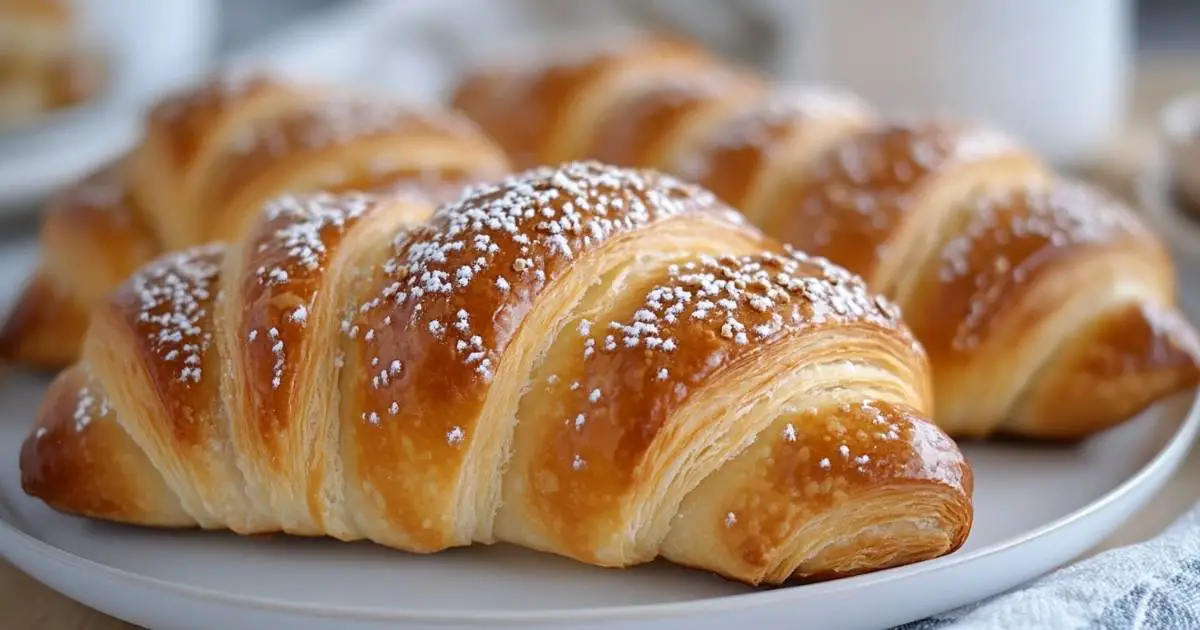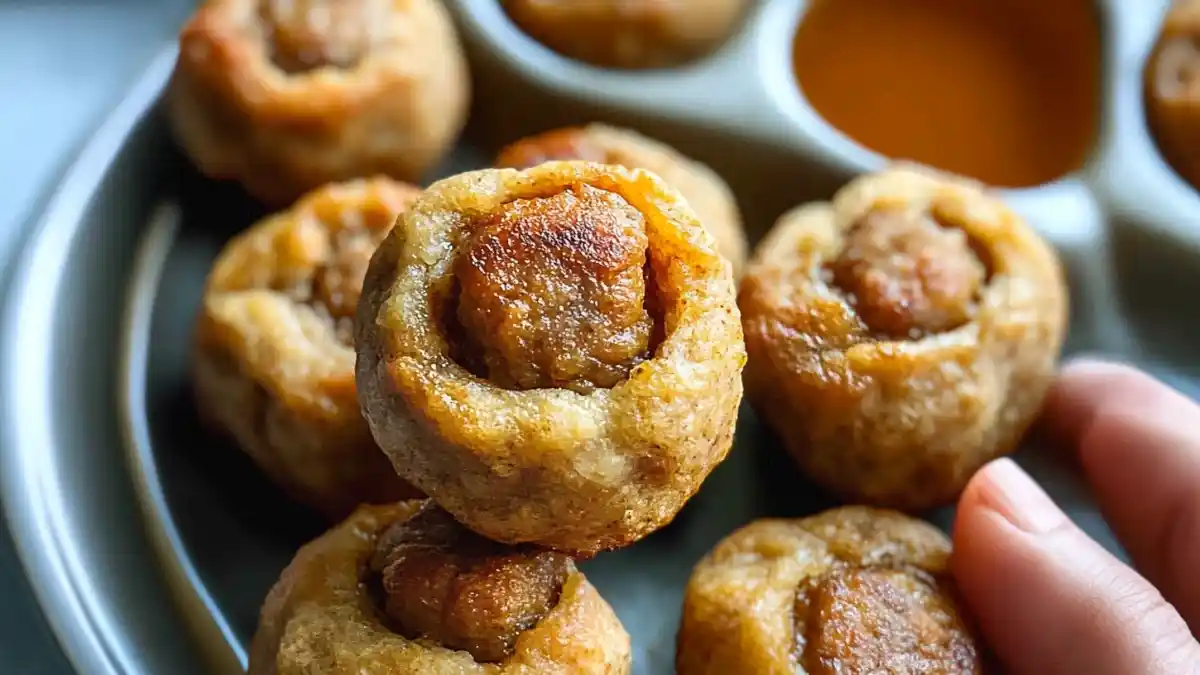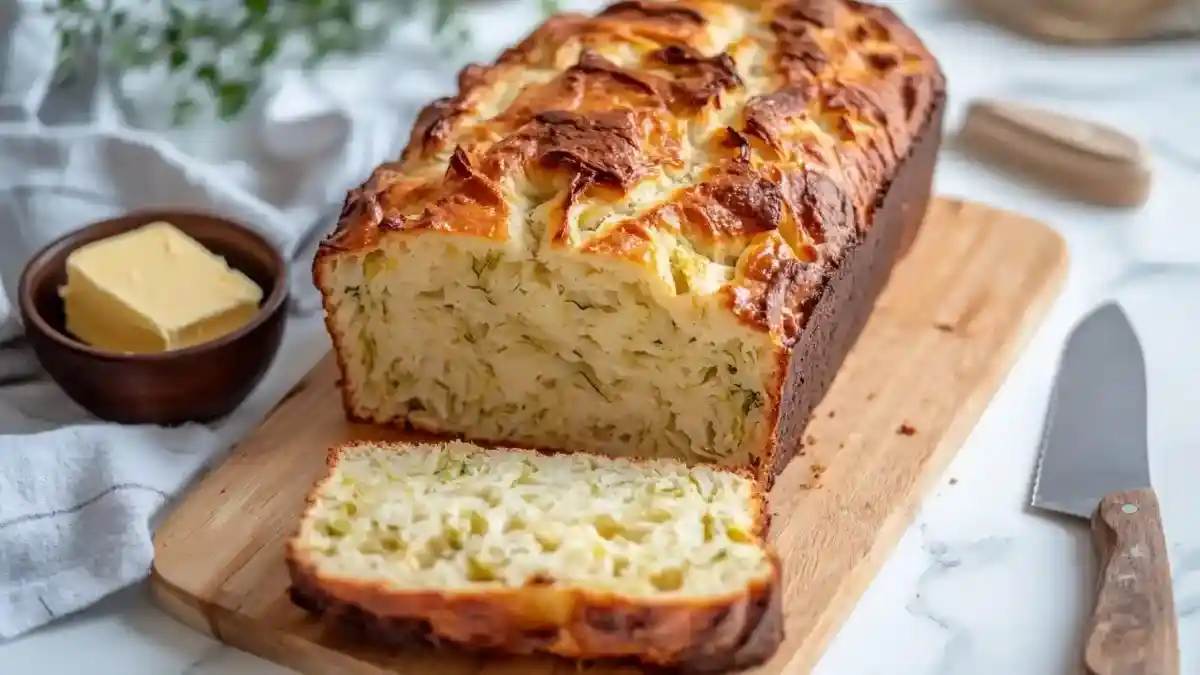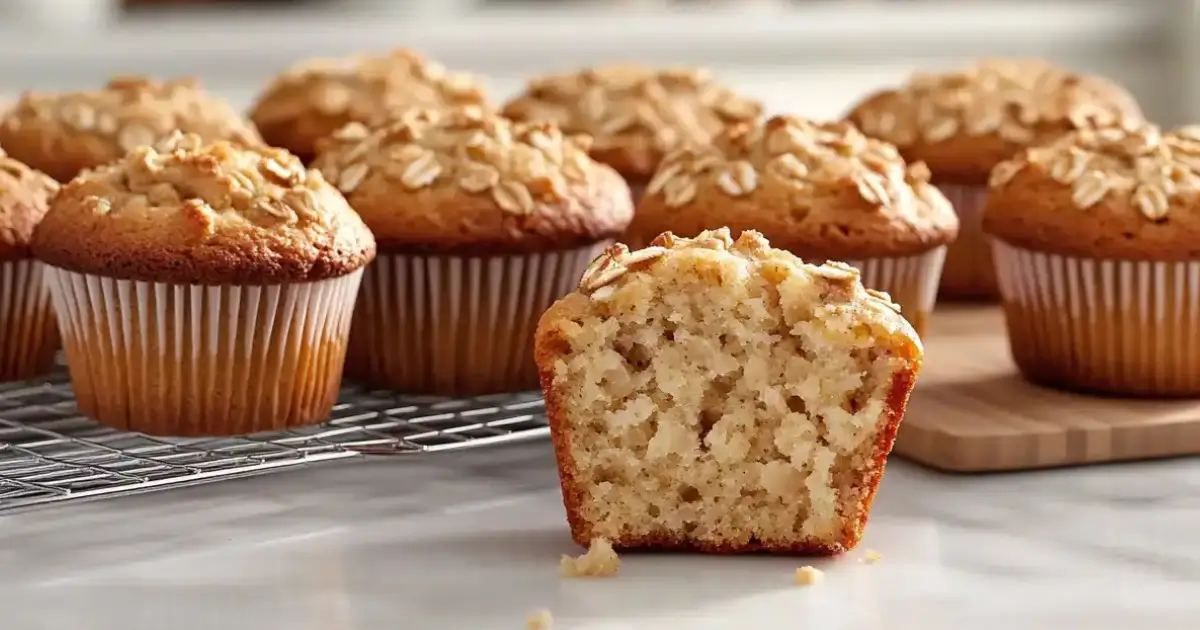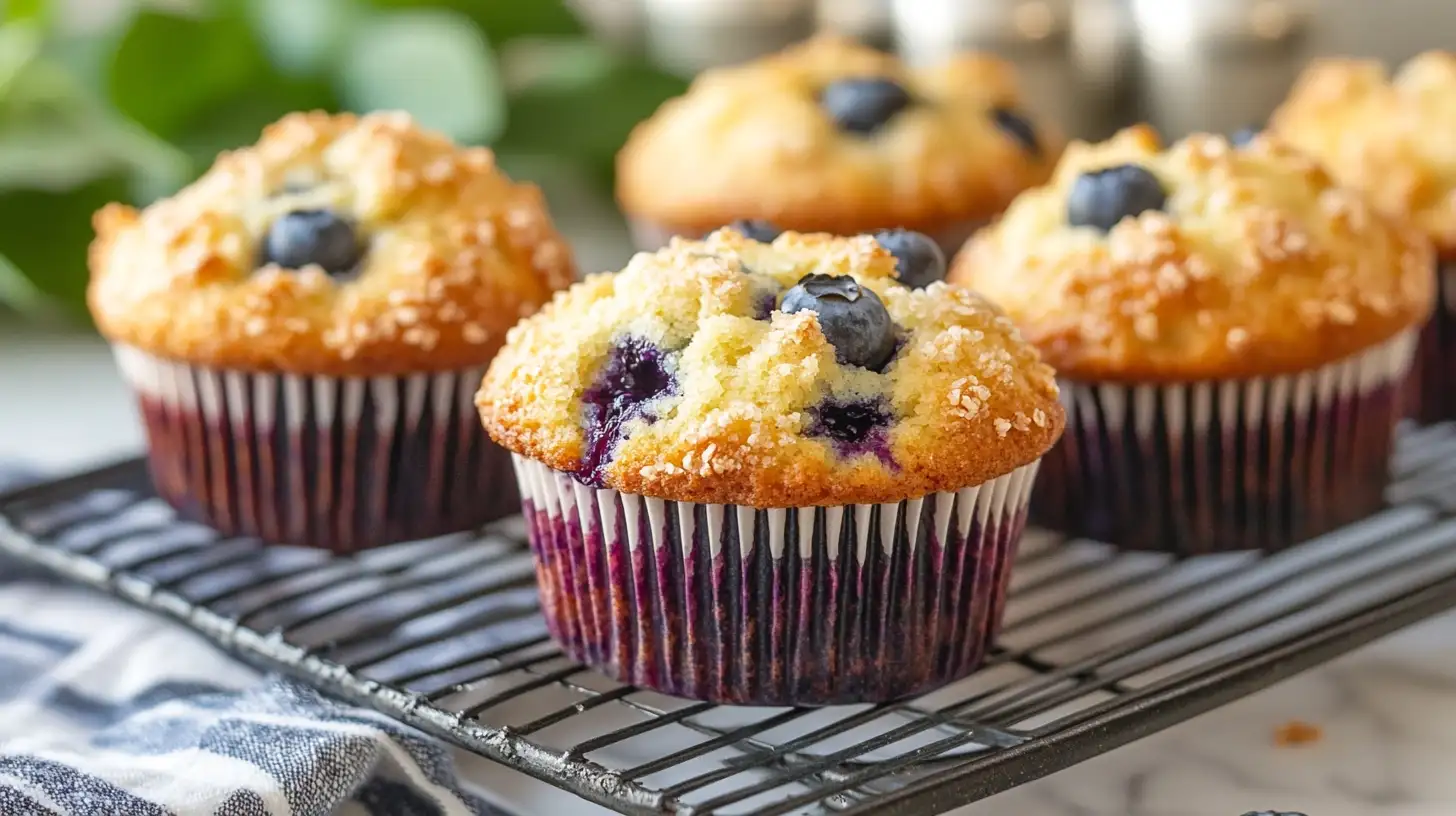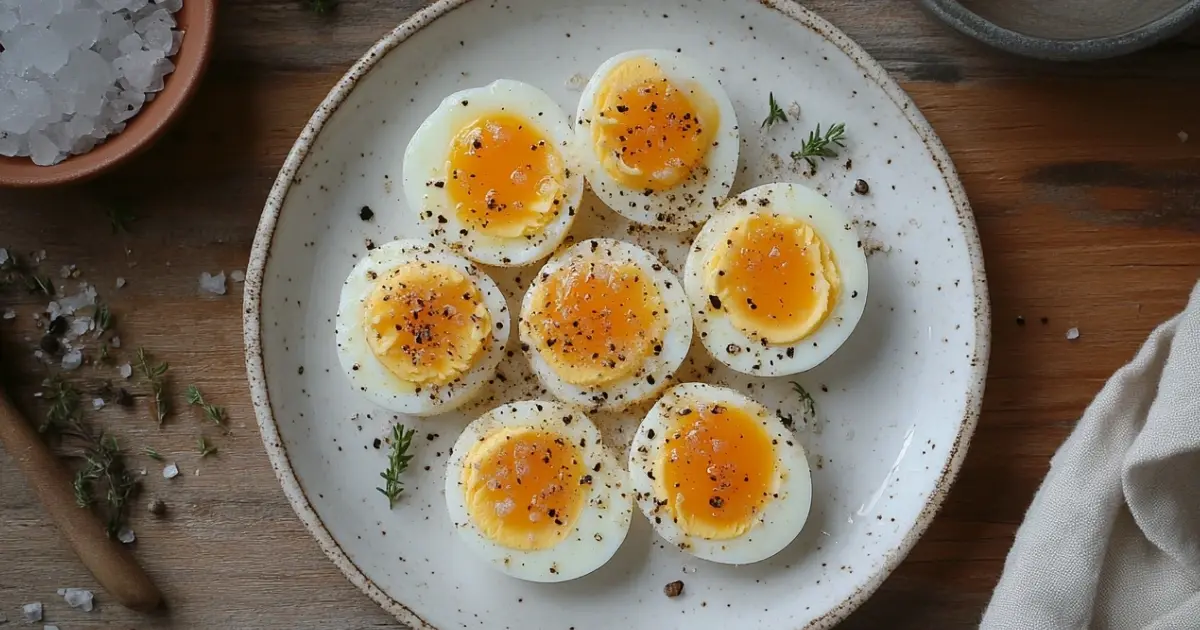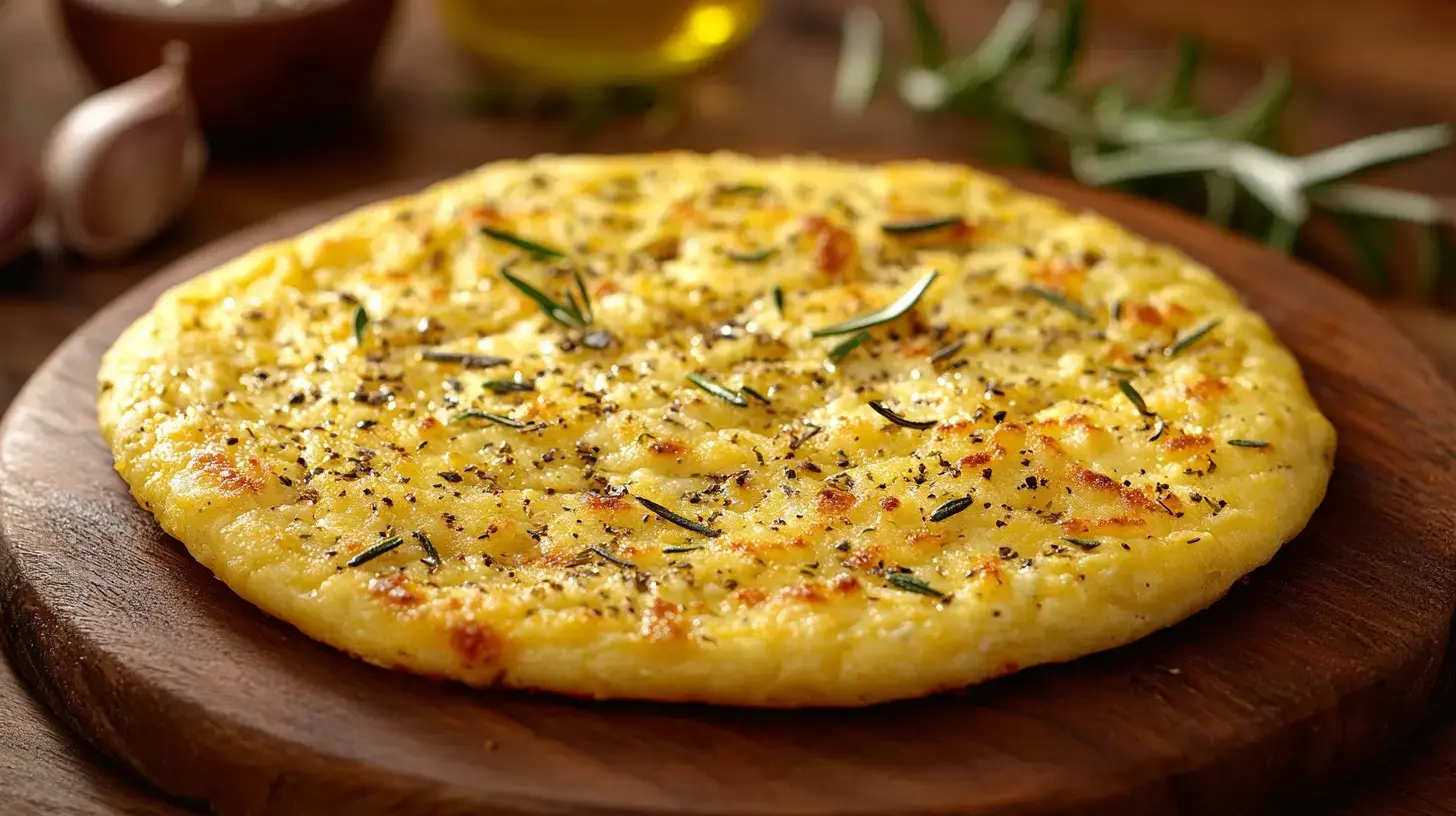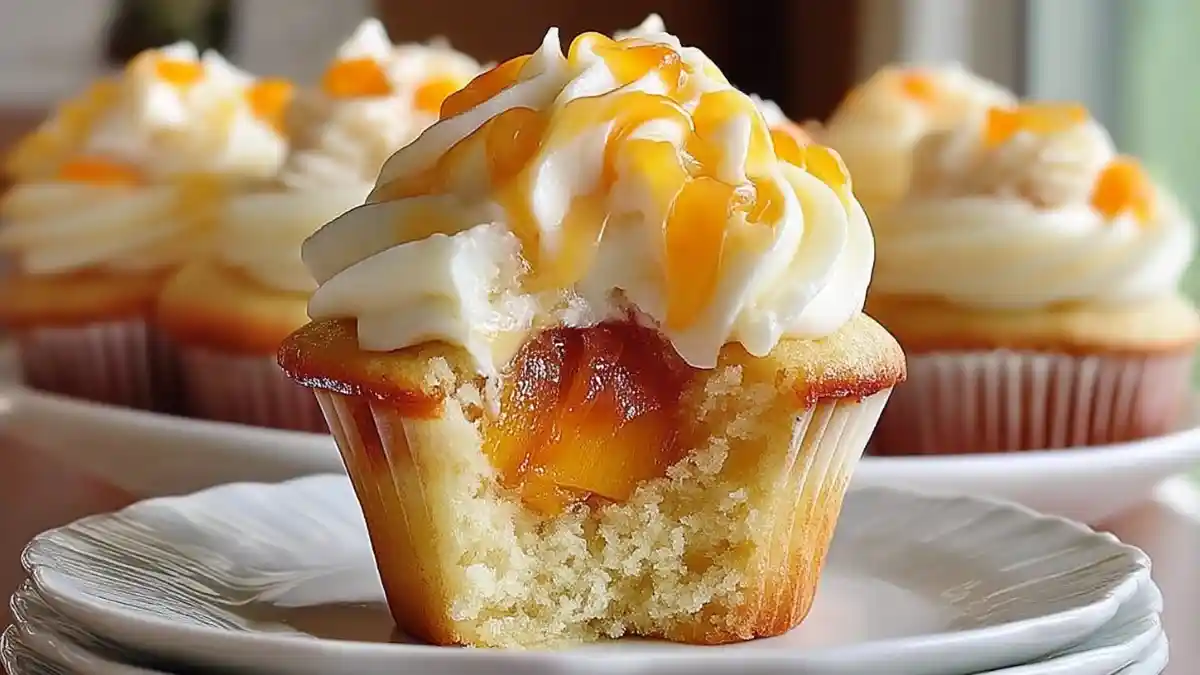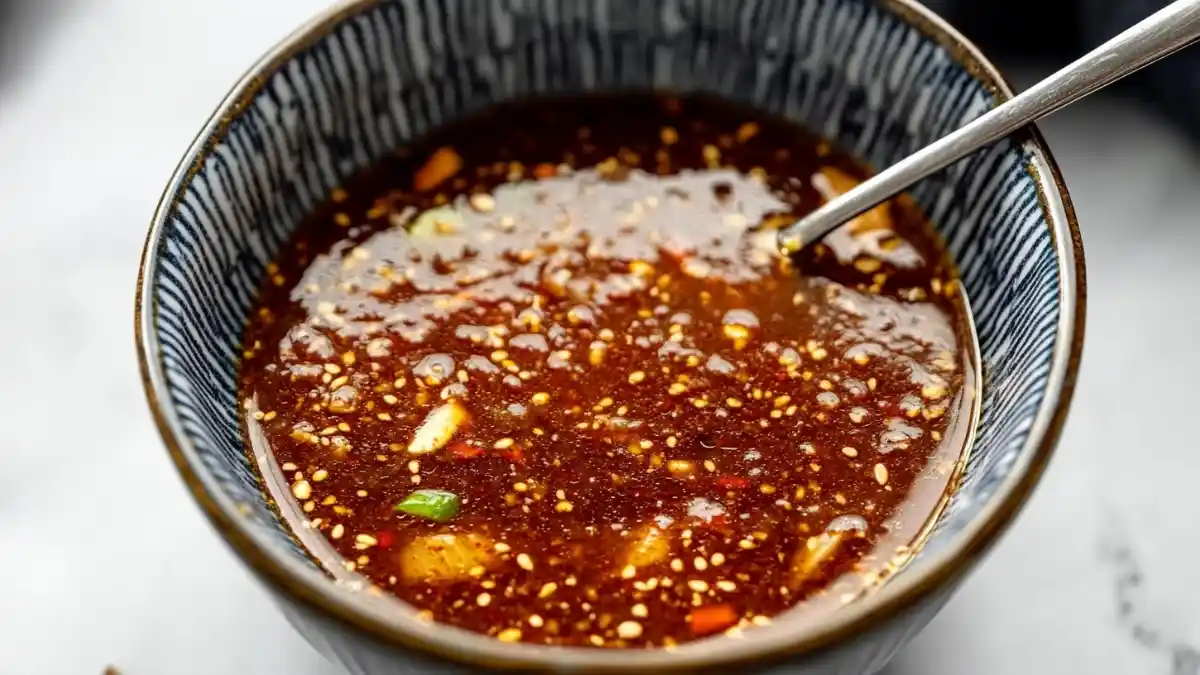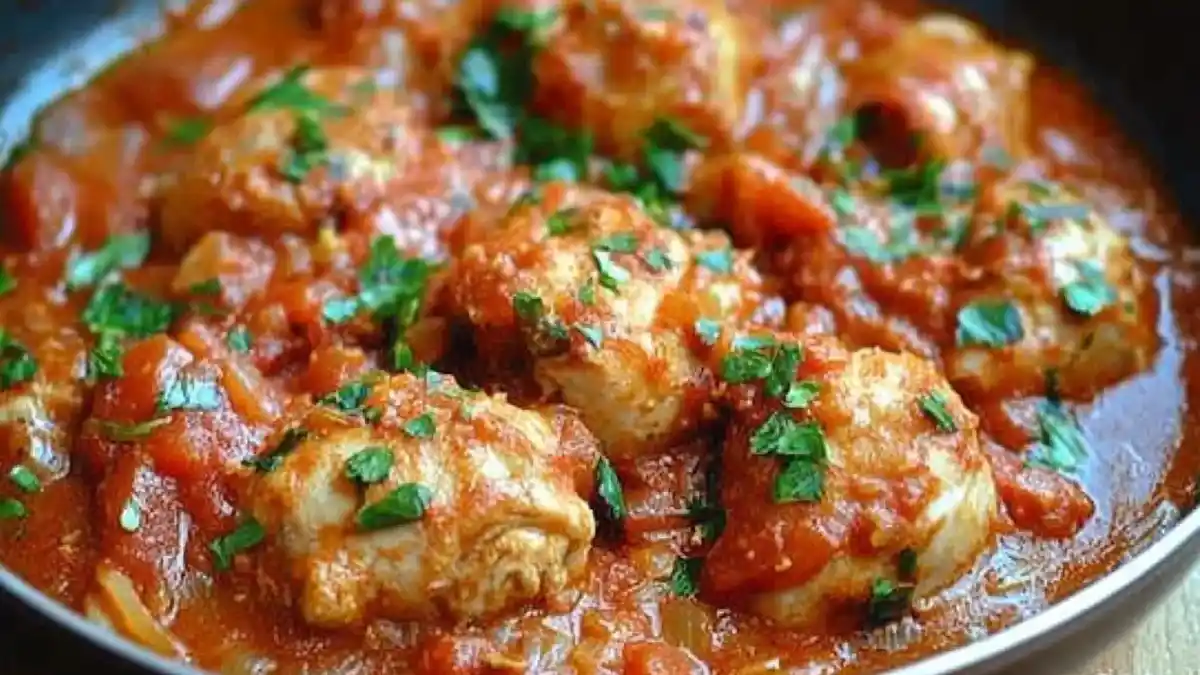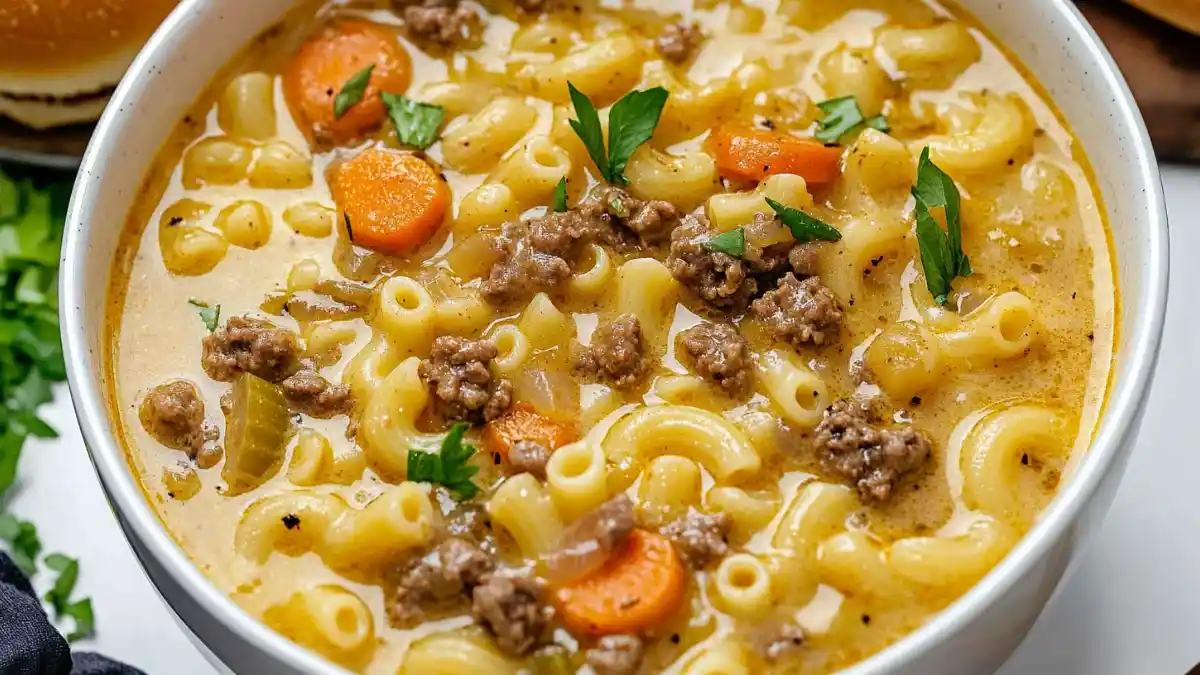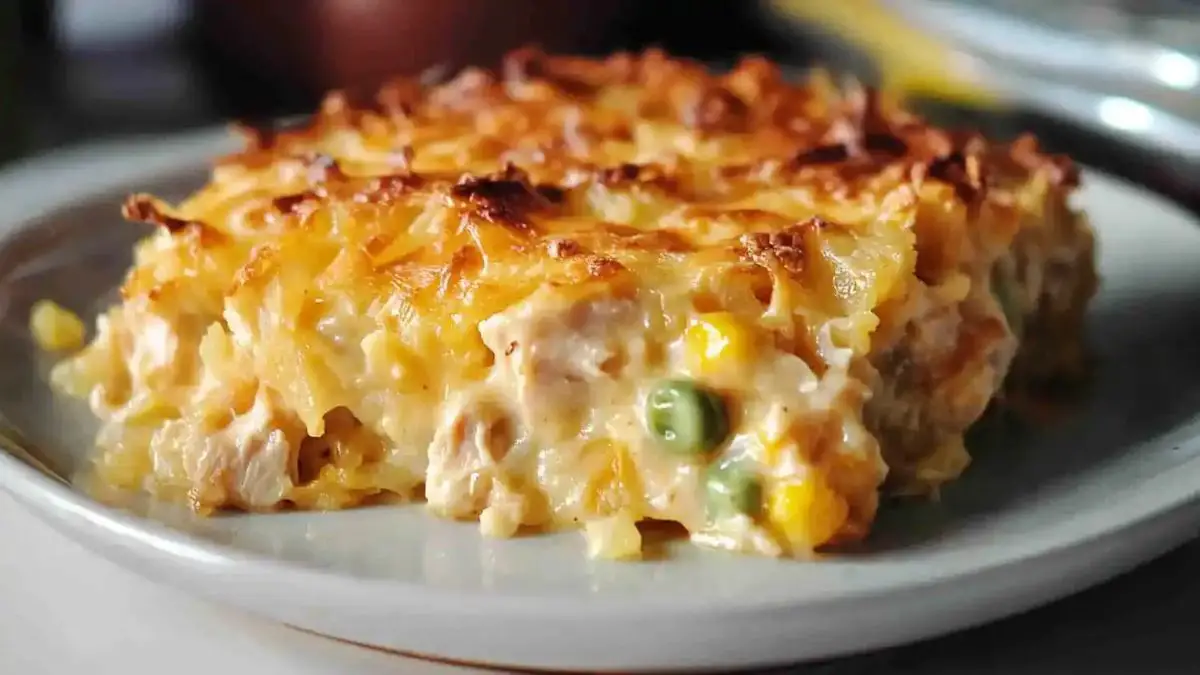Welcome to this gipfeli recipe guide. If you crave a light, golden pastry that offers flaky layers and a gentle, buttery taste, you have come to the right place. Gipfeli are a traditional Swiss treat, shaped like a crescent and often likened to a french croissant. Yet gipfeli aren’t the same as classic croissants—there is a distinct character that makes them shine in Swiss baking.
Here’s my recipe to get you started on making gipfeli at home. This article will help you create flaky gipfeli, offer tips on handling yeast, and share methods to roll the dough into a crescent shape. Get ready for delicious gipfeli recipe success.
Why You’ll Love This Recipe
Gipfeli bring a special kind of joy. They offer a flaky texture that pairs well with sweet or savory fillings. Their layers puff up gently, delivering a satisfying bite that feels airy yet rich. If you enjoy a Swiss croissant or a french croissant, these crescent-shaped pastries will capture your heart too. The process to make gipfeli recipe at home is easier than you may think, and the reward is well worth it. The warm milk and yeast combination gives the dough a soft lift, while cold butter helps create those flaky layers.
With a few steps, some resting time, and a bit of patience, you can achieve perfect gipfeli on your own. That first bite into a buttery gipfeli is a warm welcome to Swiss culture, and it is something you can share with family or friends at breakfast or as an anytime snack.
Ingredients for Gipfeli Recipe
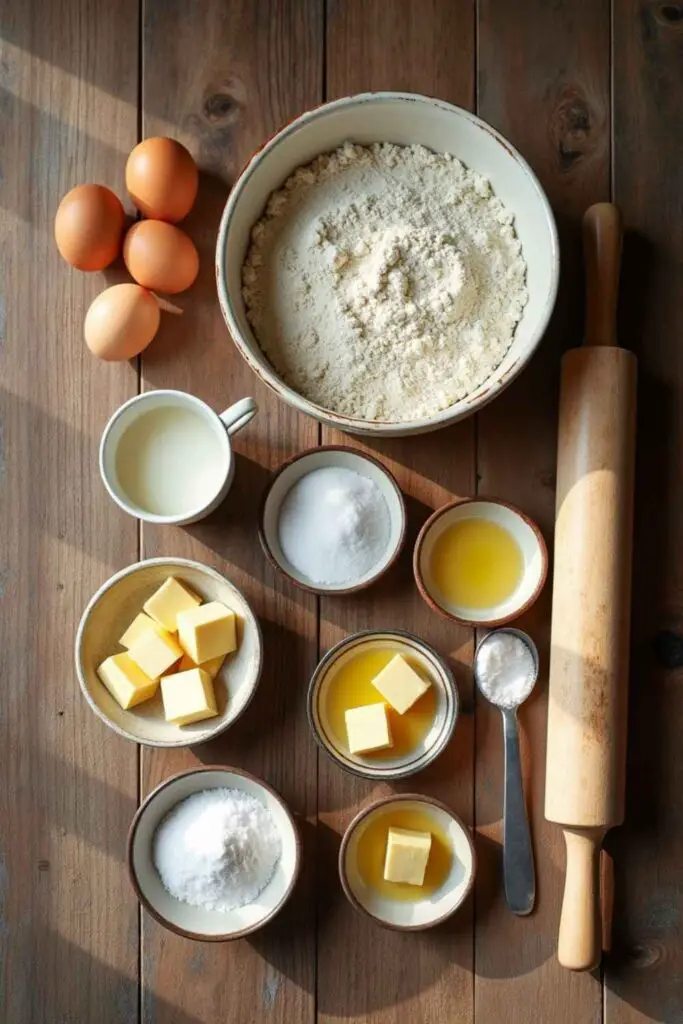
Before we start, let’s list the ingredients for gipfeli recipe. Feel free to customize your gipfeli by adding a sweet or savory spread later, but these core items help form the classic gipfeli dough:
- All-Purpose Flour – About 4 cups (plus extra for dusting your floured surface)
- Yeast – 2¼ teaspoons of active dry yeast (instant yeast works too)
- Warm Milk – 1 cup (around 110°F for best results)
- Sugar – 3 tablespoons
- Salt – 1½ teaspoons
- Cold Butter – 6 tablespoons, cut into small cubes
- Room Temperature Butter – 3 tablespoons, softened (optional for layering, if you want extra richness)
- Egg – 1 large egg, beaten, for the gipfeli with the egg wash
- A bit of water for sealing edges if desired
This set of ingredients will help you achieve that smooth and elastic dough and yield a traditional swiss experience.
How to Make Gipfeli Recipe
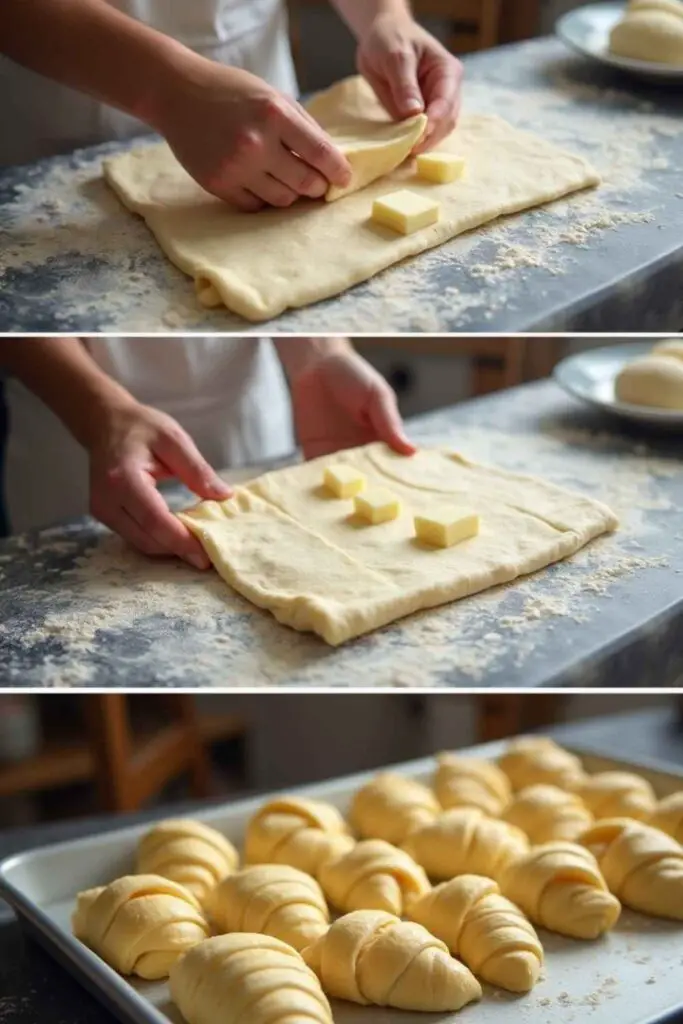
Creating homemade gipfeli might sound complex, but this step-by-step gipfeli guide will simplify each phase. Making gipfeli at home involves kneading, rolling, shaping, and a bit of patience. By following these instructions, you can enjoy freshly baked gipfeli that feel like a real swiss delight.
Step 1: Activate the Yeast
- Warm the milk to about 110°F. Combine it with the yeast and sugar in a large bowl.
- Stir gently and let it rest for about 5–7 minutes. You will know the yeast has activated when it becomes foamy on top.
Step 2: Form the Dough
- Once the yeast is foamy, mix in the flour and salt. If you have a stand mixer, use its dough hook on low speed. Otherwise, you can mix by hand.
- Knead the dough for about 8–10 minutes. The goal is to achieve a dough that is smooth and elastic.
- If the dough seems dry, add a little warm water, a tablespoon at a time. If it is sticky, dust in a bit more flour.
Step 3: First Rise
- Shape the dough into a ball. Place it in a lightly greased bowl and cover with plastic wrap.
- Keep it in a warm area for about 1 hour, or until the dough has risen and almost doubled in size.
Step 4: Incorporate Butter and Roll the Dough
- Punch down the dough gently to release some air.
- On a lightly floured surface, roll the dough into a large rectangle about ¼-inch thick.
- Place the small cubes of cold butter across the middle of the dough. Then fold the dough like a letter: fold the top third down and the bottom third up, covering the butter.
- Turn the dough 90 degrees and use your rolling pin to flatten it again to a rectangle shape. Fold again in thirds.
- Wrap the dough in plastic wrap and let it rest in the fridge for 30 minutes to let the gluten relax and the butter firm up. This folding is what helps create those flaky pastries.
Step 5: Second Roll and Fold for Flaky Layers
- Remove the dough from the fridge. Roll the dough out again into a rectangle. Fold in thirds once more.
- Repeat the roll-and-fold step one more time to ensure more puff in your swiss pastry.
- Return the dough to the fridge for another 20 minutes.
Step 6: Shape the Triangles
- Take the dough out. Roll the dough into a ¼-inch thick sheet.
- Use a sharp knife to slice the dough into long strips, then cut each strip into a triangle. The base of each triangle should be about 3–4 inches wide.
- At the base of each triangle, cut a small slit (about half an inch). This helps with the crescent roll.
Step 7: Roll into a Crescent Shape
- Take each triangle and start rolling from the wide base.
- Tuck the tip under once you finish rolling so the crescent shape holds firmly.
- Shaped gipfeli should be placed on a baking sheet lined with parchment paper.
Step 8: Final Rise and Proof
- Cover the shaped gipfeli loosely with a clean towel. Let the gipfeli rest for 30–45 minutes at room temperature. This period is often called the gipfeli proof, allowing them to rise again.
- Meanwhile, preheat your oven to 375°F.
Step 9: Brush and Bake the Gipfeli
- Brush the gipfeli with the beaten egg. You can also brush each gipfeli with a mixture of egg and a splash of milk for a shinier finish.
- Bake the gipfeli for 15–18 minutes or until they turn golden brown.
- Remove them from the oven and let them cool on a rack for a few minutes. Gipfeli are best warm, so serve soon after baking if possible.
That is the core process for the best gipfeli recipe. This method yields a classic gipfeli that highlights the wonderful flavor notes of cold butter combined with warm milk-based dough. If you follow these steps, you will get gipfeli every time that have a light, flaky crumb.
Serving and Storage Tips
Gipfeli are best served warm. Their flaky swiss texture and subtle sweetness make them a perfect breakfast or brunch food. Serve with gipfeli some jam, honey, or cheese on the side. You can also fill your gipfeli with chocolate or nut spreads if you want an extra treat. For those who love variety, mandelgipfel (almond-filled) or nussgipfel (nut-filled) are tasty variations.
If you want to prepare gipfeli ahead of time, shape them and keep them as unbaked gipfeli in the fridge overnight. The next morning, let them come to room temperature for about 20 minutes before baking. You can also freeze the unbaked gipfeli on a tray, then store them in an airtight container. When ready, let them thaw and bake as usual. Frozen gipfeli can last up to a month. After baking, store leftovers in a sealed container, but note that gipfeli are delicious right out of the oven. Reheat at 300°F for a few minutes to regain some crispness.
FoodSafety.gov Cold Food Storage Chart: This resource offers detailed charts on recommended storage times for various foods in refrigerators and freezers, helping maintain safety and quality.
Helpful Notes
- Gipfeli and Croissants: While both pastries share a crescent-shaped form and flaky layers, gipfeli often have a slightly different dough composition with less butter than a classic french croissant.
- Gipfeli dough Consistency: If your dough is very sticky, add small amounts of flour. If it is too stiff, add drops of warm water or warm milk. Aim for a dough that is pliable but not wet.
- Don’t forget the Resting Time: The folding and chilling steps help create the flaky texture. Resting also relaxes the dough to prevent shrinking.
- Brush the Gipfeli with Egg Wash: This step gives them a beautiful color and slight sheen. Gipfeli with the egg wash also stay tender on the surface while crisp on the edges.
- Doubled in Size: Proper rising ensures a lighter interior. Make sure to place dough in a warm spot away from cold drafts.
- Use a Sharp Knife: Cutting the dough cleanly helps the flaky pastries expand correctly in the oven. A dull blade can pinch the layers, reducing their lift.
- Gipfeli can be enjoyed any time of day: Breakfast, mid-afternoon snack, or even for a casual dessert.
- Making gipfeli at home is a nice way to explore Swiss cooking and share something different with loved ones.
- Gipfeli starts with Good Ingredients: Quality flour, cold butter, and fresh yeast set the stage for success.
- Gipfeli proof: Keep an eye on the final proof. Over-proofing can cause them to deflate in the oven. Under-proofing may leave them dense.
Conclusion
Gipfeli recipe is your gateway to a new kind of baking experience that reflects a traditional gipfeli heritage. These crescent-shaped treats show how Swiss pastry crafts something distinct from the more familiar croissant. With each fold and rest, you give gipfeli the structure they need for a soft interior and crisp exterior. Gipfeli are best when shared fresh, offering a taste of swiss delight that pairs easily with sweet or savory flavors. You can even customize your gipfeli by adding chocolate, nuts, or fruit spreads.
Once you try your hand at this recipe, you will see how flaky swiss pastries can elevate any breakfast spread. Gipfeli can be enjoyed on busy mornings, leisurely weekends, or even as a snack at gatherings. If you follow this guide with care and enthusiasm, you will have perfect gipfeli recipe results that impress friends and family alike.
___________________________________
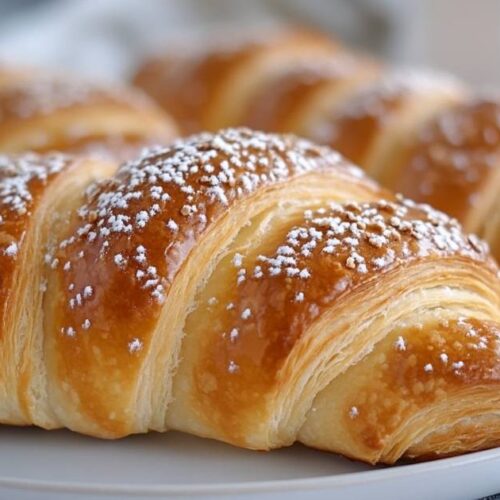
Gipfeli Recipe
Ingredients
- All-Purpose Flour – About 4 cups plus extra for dusting your floured surface
- Yeast – 2¼ teaspoons of active dry yeast instant yeast works too
- Warm Milk – 1 cup around 110°F for best results
- Sugar – 3 tablespoons
- Salt – 1½ teaspoons
- Cold Butter – 6 tablespoons cut into small cubes
- Room Temperature Butter – 3 tablespoons softened (optional for layering, if you want extra richness)
- Egg – 1 large egg beaten, for the gipfeli with the egg wash
- A bit of water for sealing edges if desired
Instructions
Step 1: Activate the Yeast
- Warm the milk to about 110°F. Combine it with the yeast and sugar in a large bowl.
- Stir gently and let it rest for about 5–7 minutes. You will know the yeast has activated when it becomes foamy on top.
Step 2: Form the Dough
- Once the yeast is foamy, mix in the flour and salt. If you have a stand mixer, use its dough hook on low speed. Otherwise, you can mix by hand.
- Knead the dough for about 8–10 minutes. The goal is to achieve a dough that is smooth and elastic.
- If the dough seems dry, add a little warm water, a tablespoon at a time. If it is sticky, dust in a bit more flour.
Step 3: First Rise
- Shape the dough into a ball. Place it in a lightly greased bowl and cover with plastic wrap.
- Keep it in a warm area for about 1 hour, or until the dough has risen and almost doubled in size.
Step 4: Incorporate Butter and Roll the Dough
- Punch down the dough gently to release some air.
- On a lightly floured surface, roll the dough into a large rectangle about ¼-inch thick.
- Place the small cubes of cold butter across the middle of the dough. Then fold the dough like a letter: fold the top third down and the bottom third up, covering the butter.
- Turn the dough 90 degrees and use your rolling pin to flatten it again to a rectangle shape. Fold again in thirds.
- Wrap the dough in plastic wrap and let it rest in the fridge for 30 minutes to let the gluten relax and the butter firm up. This folding is what helps create those flaky pastries.
Step 5: Second Roll and Fold for Flaky Layers
- Remove the dough from the fridge. Roll the dough out again into a rectangle. Fold in thirds once more.
- Repeat the roll-and-fold step one more time to ensure more puff in your swiss pastry.
- Return the dough to the fridge for another 20 minutes.
Step 6: Shape the Triangles
- Take the dough out. Roll the dough into a ¼-inch thick sheet.
- Use a sharp knife to slice the dough into long strips, then cut each strip into a triangle. The base of each triangle should be about 3–4 inches wide.
- At the base of each triangle, cut a small slit (about half an inch). This helps with the crescent roll.
Step 7: Roll into a Crescent Shape
- Take each triangle and start rolling from the wide base.
- Tuck the tip under once you finish rolling so the crescent shape holds firmly.
- Shaped gipfeli should be placed on a baking sheet lined with parchment paper.
Step 8: Final Rise and Proof
- Cover the shaped gipfeli loosely with a clean towel. Let the gipfeli rest for 30–45 minutes at room temperature. This period is often called the gipfeli proof, allowing them to rise again.
- Meanwhile, preheat your oven to 375°F.
Step 9: Brush and Bake the Gipfeli
- Brush the gipfeli with the beaten egg. You can also brush each gipfeli with a mixture of egg and a splash of milk for a shinier finish.
- Bake the gipfeli for 15–18 minutes or until they turn golden brown.
- Remove them from the oven and let them cool on a rack for a few minutes. Gipfeli are best warm, so serve soon after baking if possible.
Video
Notes
- Calories: 250 kcal
- Total Fat: 12g
- Saturated Fat: 7g
- Cholesterol: 45mg
- Sodium: 180mg
- Carbohydrates: 30g
- Fiber: 1g
- Sugar: 5g
- Protein: 6g
More Breakfast Favorites You’ll Love:
If you enjoyed diving into the Gipfeli Recipe, why not explore more delightful dishes from our collection? Here are some must-try recipes to elevate your cooking adventures:
- Pumpkin Pancake Recipe – Fluffy, spiced pancakes perfect for a cozy morning.
- Matcha Chia Pudding – A healthy and energizing breakfast with a vibrant green tea flavor.
- Cinnamon Roll French Toast – A fusion of two breakfast classics for an irresistible treat.
- Pistachio Croissant Recipe – Buttery, flaky croissants filled with a rich pistachio cream.
- Sourdough Discard Pancakes Recipe – A tangy and fluffy way to use up sourdough discard.
Enjoy these mouthwatering recipes and take your home cooking to the next level!
FAQs
1. What Makes Gipfeli Different from a French Croissant?
Gipfeli differ from a French croissant in both butter content and dough composition. While both pastries feature flaky layers and a crescent shape, Gipfeli typically use less butter and have a lighter, subtler taste. They are a staple in Swiss baking and offer a uniquely tender interior with a slightly crisp exterior.
2. Can I Fill My Gipfeli with Sweet or Savory Ingredients?
Absolutely! Gipfeli can be enjoyed plain or filled with sweet spreads like jam or chocolate. You can also opt for savory options, such as cheese or herb butters. The process of rolling and shaping remains the same; just place your desired filling at the base of each triangle before rolling.
3. How Do I Get the Flaky Texture in My Gipfeli?
Achieving a flaky texture involves strategic folding and chilling of the dough. By rolling the dough into a large rectangle, folding it like a letter, and allowing it to rest, you create thin layers of dough and butter. This layering technique is key to producing the signature puff and lightness in homemade Gipfeli.
4. What Is the Best Way to Store Unbaked Gipfeli?
If you want to prepare Gipfeli ahead of time, shape them and keep them in the refrigerator overnight. Alternatively, freeze them on a baking sheet until firm, then transfer to an airtight container. When ready to bake, let the unbaked Gipfeli thaw (or come to room temperature) before placing them in the oven to ensure an even rise.
5. Why Does the Dough Sometimes Fail to Rise Properly?
A common cause of poor rising is inactive yeast or unsuitable water temperature. Always ensure your yeast is fresh and that the warm milk or water is between 100°F and 110°F. If it’s too hot, it can kill the yeast; if it’s too cool, the yeast may not activate fully. Properly proofing the dough in a warm spot also helps it rise to the right volume.

